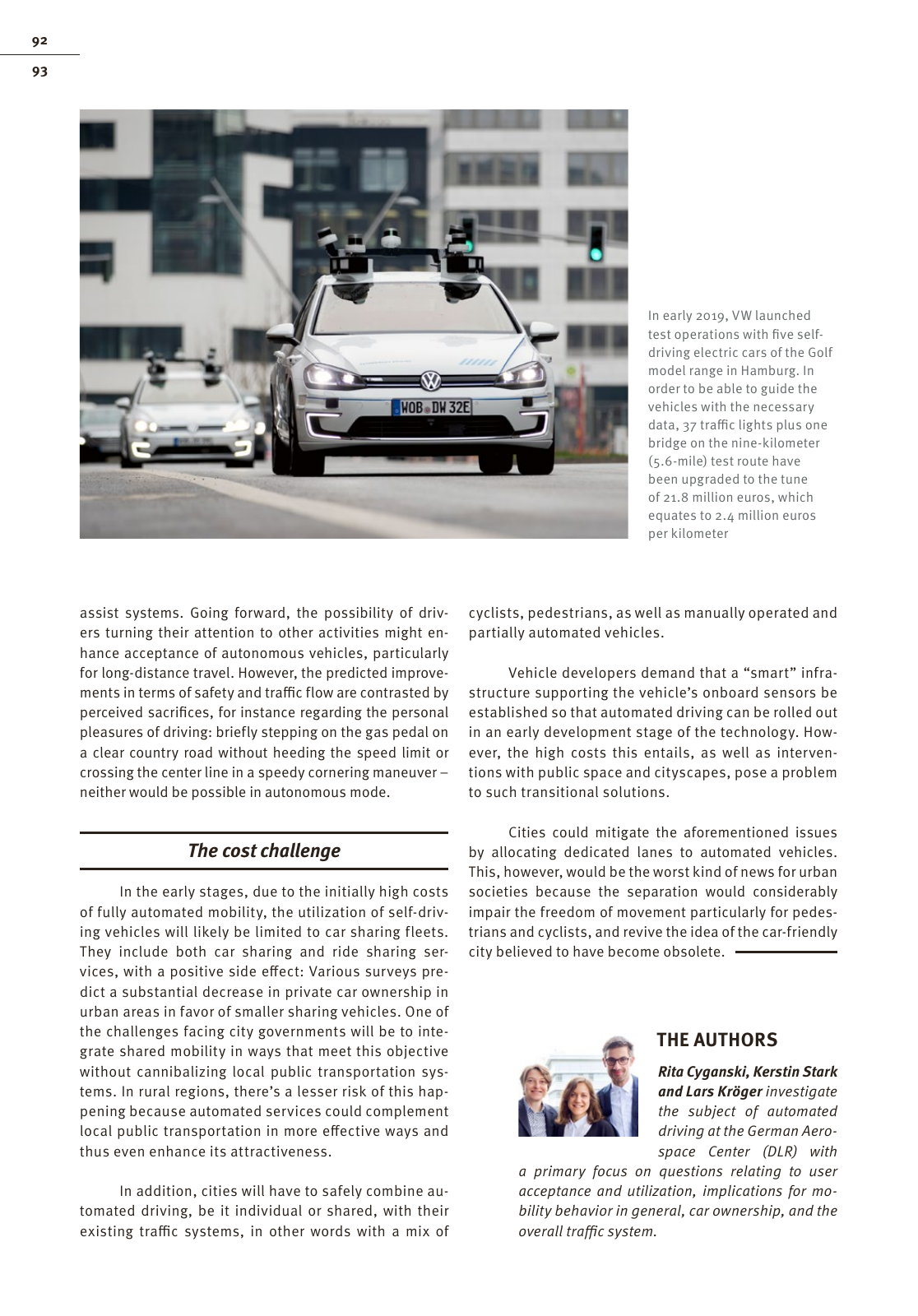assist systems Going forward the possibility of driv ers turning their attention to other activities might en hance acceptance of autonomous vehicles particularly for long distance travel However the predicted improve ments in terms of safety and traffic flow are contrasted by perceived sacrifices for instance regarding the personal pleasures of driving briefly stepping on the gas pedal on a clear country road without heeding the speed limit or crossing the center line in a speedy cornering maneuver neither would be possible in autonomous mode The cost challenge In the early stages due to the initially high costs of fully automated mobility the utilization of self driv ing vehicles will likely be limited to car sharing fleets They include both car sharing and ride sharing ser vices with a positive side effect Various surveys pre dict a substantial decrease in private car ownership in urban areas in favor of smaller sharing vehicles One of the challenges facing city governments will be to inte grate shared mobility in ways that meet this objective without cannibalizing local public transportation sys tems In rural regions there s a lesser risk of this hap pening because automated services could complement local public transportation in more effective ways and thus even enhance its attractiveness In addition cities will have to safely combine au tomated driving be it individual or shared with their existing traffic systems in other words with a mix of THE AUTHORS Rita Cyganski Kerstin Stark and Lars Kröger investigate the subject of automated driving at the German Aero space Center DLR with a primary focus on questions relating to user acceptance and utilization implications for mo bility behavior in general car ownership and the overall traffic system cyclists pedestrians as well as manually operated and partially automated vehicles Vehicle developers demand that a smart infra structure supporting the vehicle s onboard sensors be established so that automated driving can be rolled out in an early development stage of the technology How ever the high costs this entails as well as interven tions with public space and cityscapes pose a problem to such transitional solutions Cities could mitigate the aforementioned issues by allocating dedicated lanes to automated vehicles This however would be the worst kind of news for urban societies because the separation would considerably impair the freedom of movement particularly for pedes trians and cyclists and revive the idea of the car friendly city believed to have become obsolete In early 2019 VW launched test operations with five self driving electric cars of the Golf model range in Hamburg In order to be able to guide the vehicles with the necessary data 37 traffic lights plus one bridge on the nine kilometer 5 6 mile test route have been upgraded to the tune of 21 8 million euros which equates to 2 4 million euros per kilometer 93 92

Hinweis: Dies ist eine maschinenlesbare No-Flash Ansicht.
Klicken Sie hier um zur Online-Version zu gelangen.
Klicken Sie hier um zur Online-Version zu gelangen.